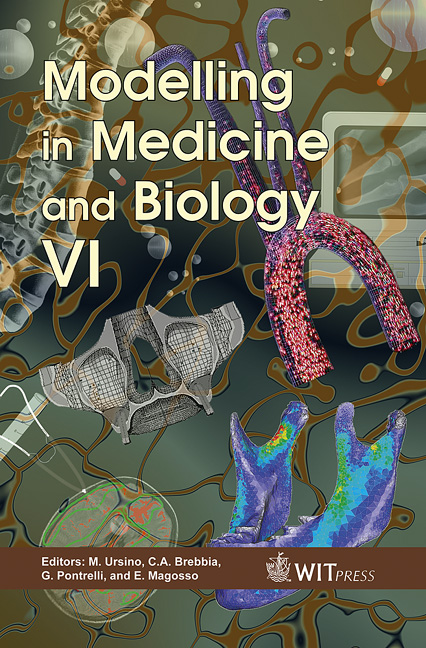A Modeling Study Of Idiopathic Intracranial Hypertension
Price
Free (open access)
Transaction
Volume
8
Pages
10
Published
2005
Size
305 kb
Paper DOI
10.2495/BIO050051
Copyright
WIT Press
Author(s)
S. A. Stevens, W. D. Lakin, N. J. Thakore, P. L. Penar & B. I. Tranmer2
Abstract
Idiopathic intracranial hypertension (IIH) is a syndrome of unknown cause characterized by elevated intracranial pressure (ICP). A stenosis of the transverse sinus is observed in many patients suffering from IIH. The role that this feature plays in the etiology of IIH remains unresolved. It may be the primary cause of IIH, an exacerbating factor, or merely a secondary event. A lumped-parameter model of intracranial pressure dynamics has been modified to accommodate transverse sinus stenosis via a Starling-like resistor. In the absence of this type of resistor the system has a unique asymptotically-stable steady-state with normal pressures. With this type of resistor present, a second, asymptotically-stable steady-state may exist. This state is characterized by elevated ICP concurrent with a compressed transverse sinus. It is hypothesized that IIH is a physiological manifestation of this elevated steady state.We conclude that the primary cause of IIH is a compressible, as opposed to rigid, transverse sinus, and that the observed stenosis is a necessary characteristic of the elevated steady state. Simulations suggest possible diagnostic techniques and comparisons are made to clinical data. 1 Introduction Idiopathic intracranial hypertension (IIH), also called pseudotumor cerebri and benign intracranial hypertension, is a syndrome of unknown cause characterized by elevated intracranial pressure (ICP) without evidence of ventricular dilatation, mass lesion, cerebrospinal fluid (CSF) abnormality, or dural sinus thrombosis. It
Keywords





